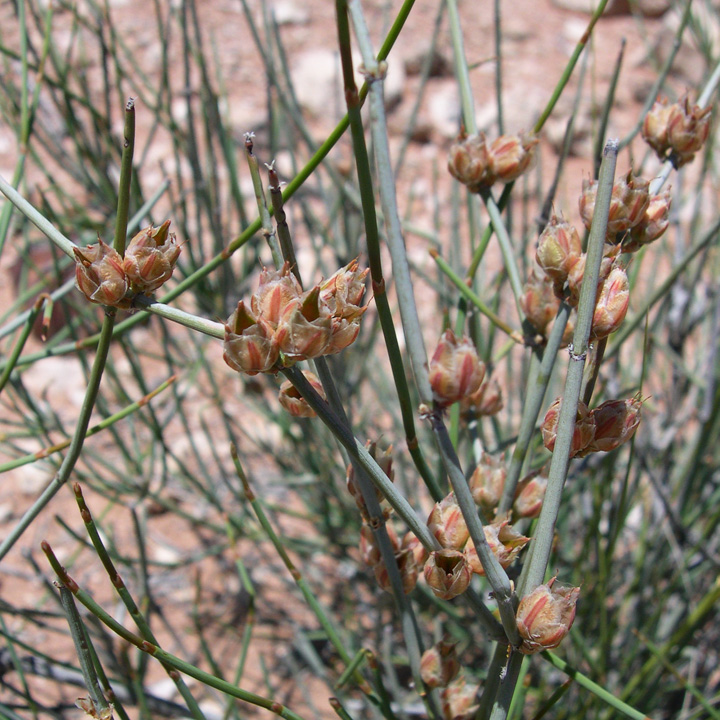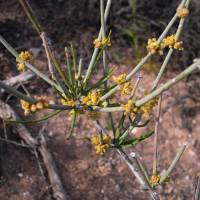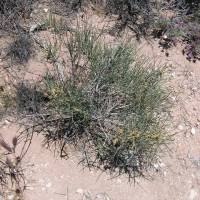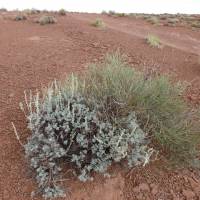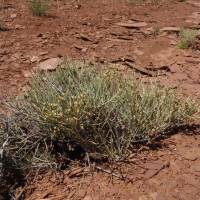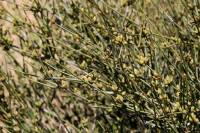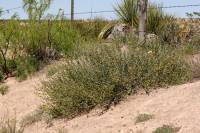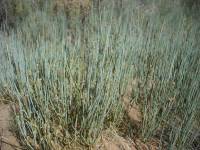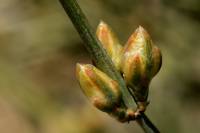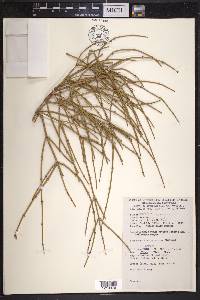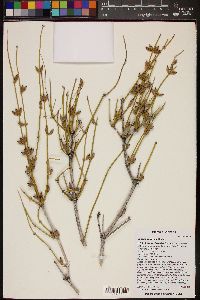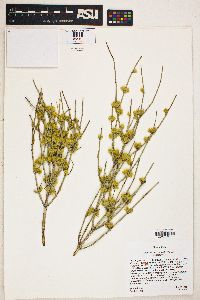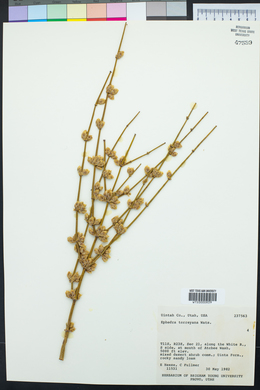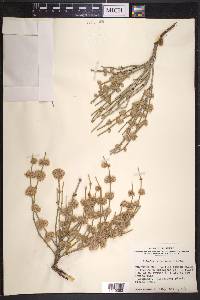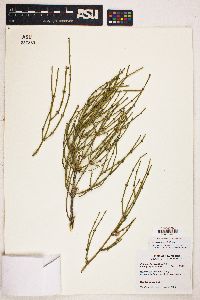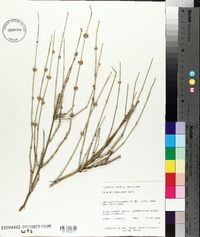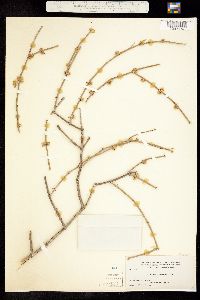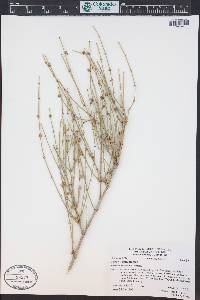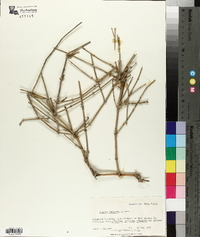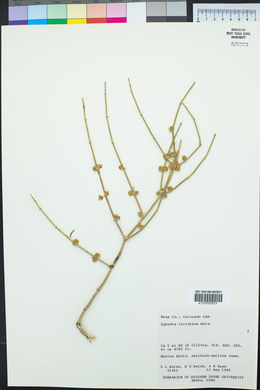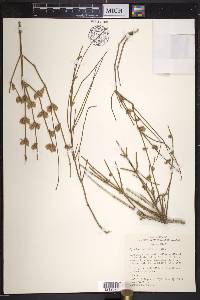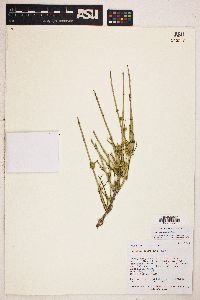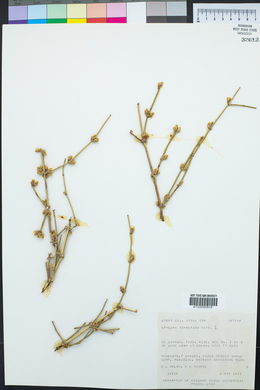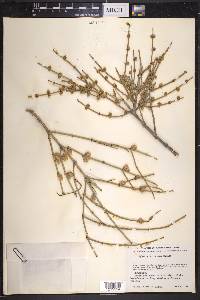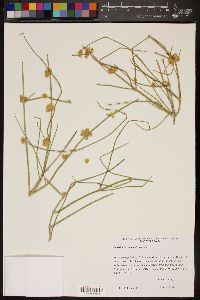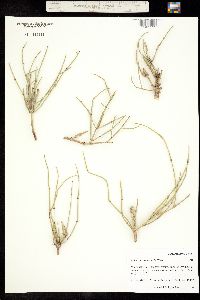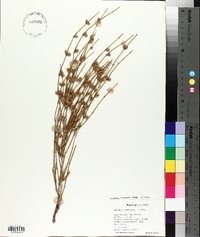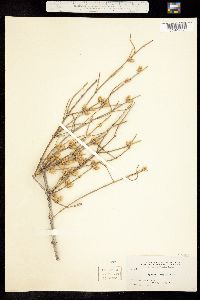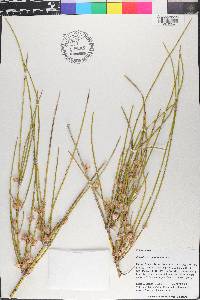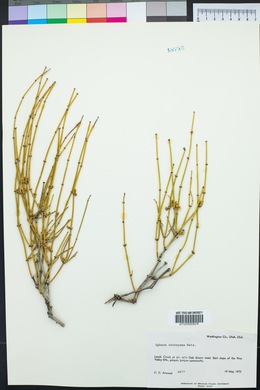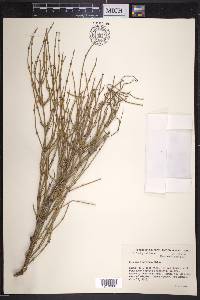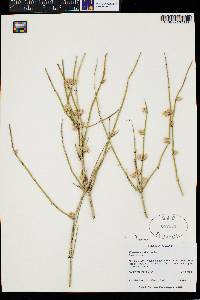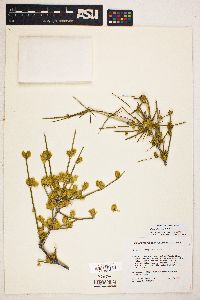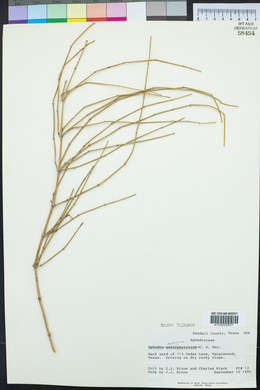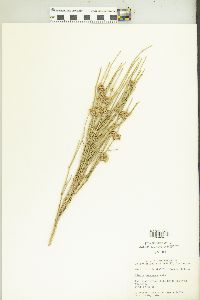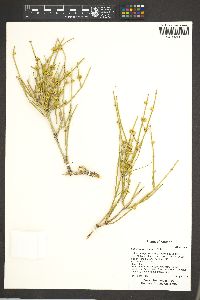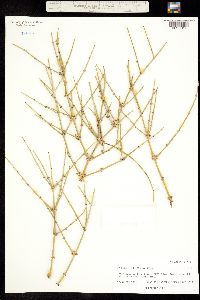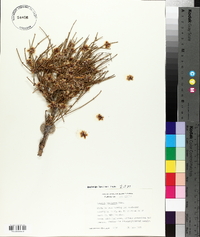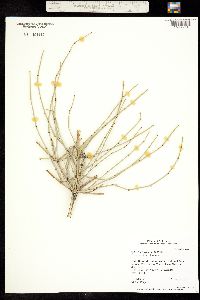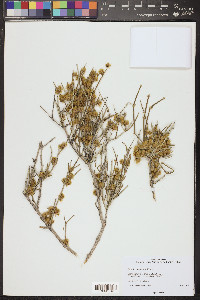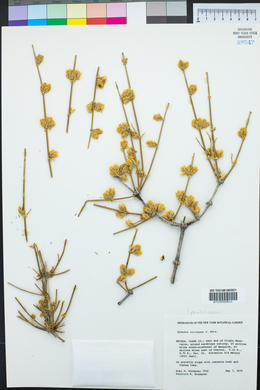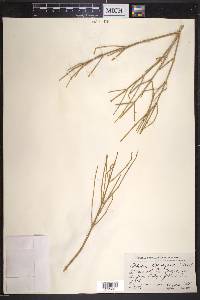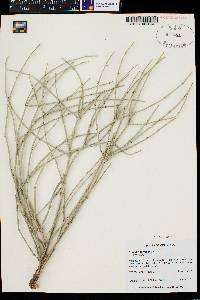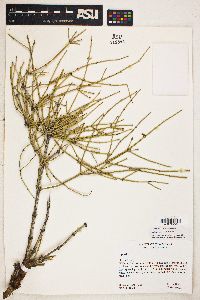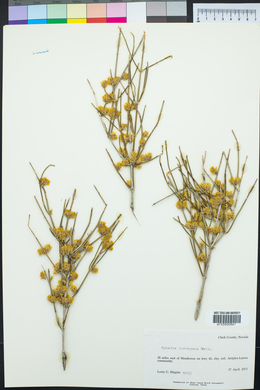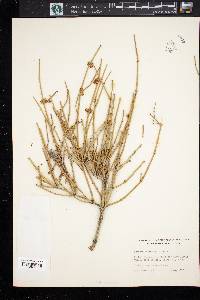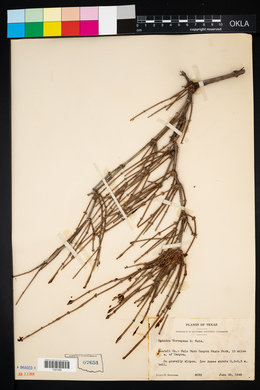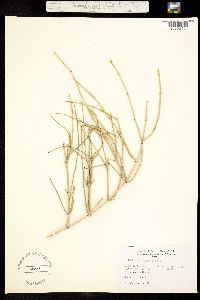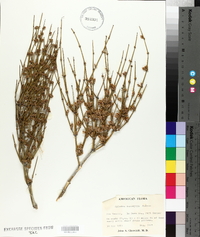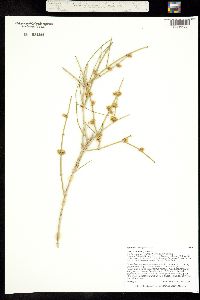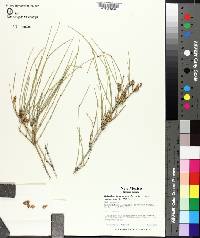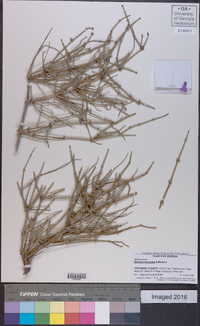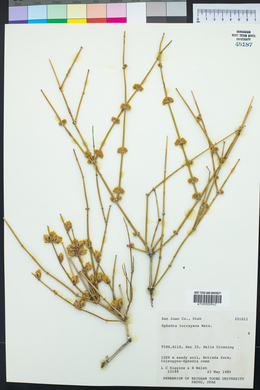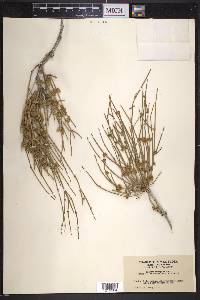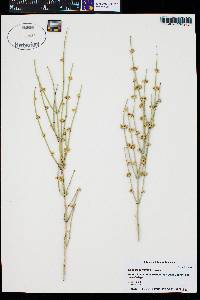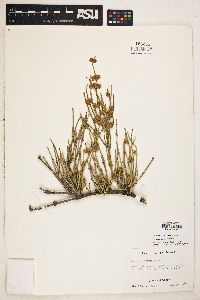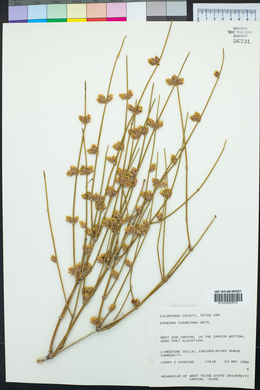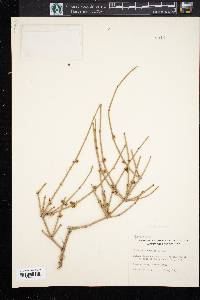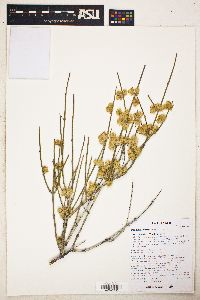Ephedra torreyana
|
|
|
|
Family: Ephedraceae
Torrey's Joint-Fir, more...Torrey's jointfir, torrey ephedra, Torrey mormon tea, Torrey's ephedra, Torrey's mormon tea
|
Shrubs erect, 0.25--1 m. Bark gray, cracked and irregularly fissured. Branches alternate or whorled, rigid, angle of divergence about 45°. Twigs blue-green, becoming gray with age, glaucous, with numerous very fine longitudinal grooves; internodes 2--5 cm. Terminal buds conic, less than 4 mm. Leaves in whorls of 3, 2--5 mm, connate to 2/3 their length; bases becoming gray and shredded with age; apex acute. Pollen cones 1--4 at node, ovoid, 6--8 mm, sessile; bracts in 6--9 whorls of 3, cream to pale yellow, ovate, slightly clawed, 2--4 × 2--4 mm, membranous; bracteoles slightly exceeding bracts; sporangiophores 2--4 mm, exserted to 1/2 their length, with 5--8 sessile to short-stalked microsporangia. Seed cones 1--several at node, ovoid, 9--15 mm, sessile; bracts in 5 or 6 whorls of 3, obovate, 6--9 × 6--10 mm, papery, translucent with orange-yellow to greenish yellow center and base, base clawed, margins minutely dentate, undulate. Seeds 1--2(--3), ellipsoid, 7--10 × 1.5--3 mm, light brown to yellowish green, scabrous. Coning spring. Dry rocky to sandy areas; 500--2000 m; Ariz., Colo., Nev., N.Mex., Tex., Utah; Mexico in Chihuahua. Ephedra torreyana is known to form hybrids with two other species of Ephedra as reported and described by H. C. Cutler (1939). The first of these is E . × intermixta Cutler, the hybrid between E . torreyana and E . trifurca . This hybrid occurs in a small area of southwestern New Mexico (near Engle, Sierra County) within the zone of sympatry of the two parental species; it may be fertile (mature seeds are formed). It is intermediate in most characters but can be identified by its combination of the spinelike terminal buds of E . trifurca and the scabrous, light yellow seeds of E . torreyana . The second hybrid is Ephedra × arenicola Cutler, the hybrid between E . torreyana and E . cutleri . This hybrid is known only from the type locality in extreme northeastern Arizona (near Dennehotso, Apache County) in an area of sympatry of the parental species. This hybrid is intermediate in most characters, but it can be distinguished by its combination of the setaceous leaves, viscid stems, and long-pedunculate seed cones of E . cutleri with the persistent, whorled leaves of E . torreyana .
FNA 1993, Allred and Ivey 2012, Heil et al. 2013 Common Name: Torrey's jointfir Duration: Perennial Nativity: Native Lifeform: Subshrub General: Erect, much branched shrubs, up to 1 m tall, with jointed, blue-green to olive-green stems; bark on older stems is gray, cracked and irregularly fissured; branches rigid, solitary or whorled at nodes, with an angle of divergence of about 45°; twigs sometimes waxy (glaucous). Needles: Leaves reduced to small brown scales, 2-5 mm long, in whorls of 3 per node, connate (united) for up to 2/3 of their length; bases becoming gray and shredded with age. Cones: Dioecious (with male and female cones on separate plants); pollen (male) cones 1-4 per node, ovoid, 6-8 mm long, sessile, wrapped with 6-9 cream to pale yellow bracts, 2-4 mm long, arranged in whorls of 3; seed (female) cones solitary to several per node, ovoid, 9-15 mm long, sessile, wrapped in 5 or 6 whorls of bracts, each whorl consisting of 3 bracts, these obovate and papery (scarious), 6-9 mm long by 6-10 mm wide, translucent with an orange-yellow to greenish-yellow center and base. Seeds: Seeds usually 1-2 per cone, ellipsoid, 7-10 mm long and 1-3 mm wide, light brown to yellowish green. Ecology: Found on dry, rocky to sandy hillsides, from 1,500-6,500 ft (491-1981 m); cones form in springtime. Distribution: NV, UT, CO, AZ NM, TX; south to n MEX. Notes: Ephedra is an incredibly distinct genus, found throughout the American West and as far south as South America. They are much-branched shrubs with jointed, green stems and leaves that are reduced to tiny brown scales which can be found in pairs or sets of 3 at the stem nodes. E. torreyana is distinguished from most other Ephedra based on the cones being sessile and the leaves (tiny brown scales) in sets of 3 per node. E. trifurca also has these two traits, but its twigs are spine-tipped and quite sharp, and the leaves are a bit larger, 5-15 mm long (E. torreyana's leaves are 2-5 mm long). E. torreyana is especially common in the Colorado Plateau, but is also found throughout New Mexico. The species serves as food for wildlife and is eaten by livestock, especially sheep. Ethnobotany: A tea is made from steeping the stems in boiling water, and the seeds may be roasted and eaten. The stems contain high concentrations of tannin and were used to treat intestinal ailments. Etymology: Ephedra is the ancient Greek name for Hippuris (mare's tail, in Plantaginaceae), a plant that Ephedra somewhat resembles; torreyana honors John Torrey (1796-1873), distinguished botanist and colleague of Asa Gray. Synonyms: None Editor: AHazelton 2017 |
|
|
|

